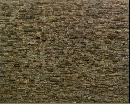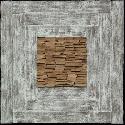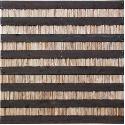
Learn foreign languages while watching your favorite YouTube videos!
The Language learning app is a handy set of tools that will help you improve your language skills by accessing subtitles, a built-in dictionary, and saving words and phrases you want to learn to revise.
Learning foreign languages will be an interesting and exciting experience for you!
My artistic considerations have concentrated upon exploring wood as a material and upon understanding its structure and its core.
The question, to which extent is it legitimate to influence the material by means of intervention without
interfering with its identity, has accompanied my work and will continue to accompany my work.
Dr. Christina Weiss, State Minister for Cultural and Media Affairs of the Federal Republic of Germany:
(...) Jan de Weryha-Wysocza?ski's biography reflects somewhat of the diverse relationship between Germany and Poland. Born in Gda?sk he was 31 years old when he migrated to Hamburg during the Solidarno?? movement and became a member of the BBK. Such relocation in those times also meant a change from one political system to another, from one ideology to the opposing and, therefore, may leave its mark on the person and artist.
Artistically, the committing influence of the American Minimal Art is obvious, especially Carl Andre's early sculptures from the sixties. The relationship of thinking creatively makes both artists associates.
Carl Andre thinks structural and consequently endeavors the repatriation to primary structures. He wants to depart from the forms invented by artists, especially from the compositional hierarchy and artistically individual touch. Or, as Sol LeWitt put it: "The form itself is of very limited meaning, it becomes the grammar of the total work."
At first sight you tend to describe Jan de Weryha as a late European representative of the Minimal Art. But as soon as you take a closer look it gets clear that Jan de Weryha has demands which are extremely contrary to the Minimal Art. His creative activity is mainly focused on the nature and the natural structure of the material. With his works the natural basis meets the rational will of designing. He again admits the pure form of the Minimal Art in double respects. For example, instead of avoiding the individual processing traces of the wood through industrial production he completely puts it to the center of attention.
Power saws, axes and firmer chisels leave completely different surfaces. Furthermore, he loves to align his quite minimal formations willfully to basic patterns of the nature such as anthills, beehives or archaic constructions: igloo, column, tower, or simple stacks as for drying wood can be found again and again.
With Jan de Weryha's works the nature and the natural structure of the material form the starting point for his designs and creative processes. His works exist on the confrontation of the sculptured and raw, the touched and unaffected.
At the same time he consciously disappoints the viewer's expectation, who is used to prefer processed sides of a sculpture compared to the supposedly unworked side.
Ladies and Gentlemen: Processes of historic dimensions such as the European integration and the planned eastern expansion of the EU require the ability to communicate to a great extent, willingness to work on current problems and historic burdens but also future chances - all together and creatively. Due to their willingness, the culture, the art and the artists have always developed instruments to experiment, to exceed limits, to question the conventional, to develop instruments which may have model character when collaborating with others. And they have developed a language leaving all limits behind.
In this context, the exhibition we are opening today is a living sign. Because Jan de Weryha-Wysocza?ski is a German-Polish artist in whose work the history and tradition of our both countries took influence. And those, who want to understand the exhibition, do not have to be able to speak German or Polish. They must only get involved in seeing. (...)
Biography: 1950 Born in Gda?sk, Poland
1971-76 Sculpture studies at the State University of Fine Arts in Gda?sk, Poland with Professor A. Wisniewski and Professor A. Smolana
since 1976 Freelance artist
since 1981 Living and working in Hamburg
ART AWARDS
1971 1st prize for sculpture (competition of the State University of Fine Arts in Gda?sk, Poland)
1975 3rd prize for sculpture (art competition of all universities of fine arts throughout Poland)
1978 Awarding at the sculptural form competition within the framework of the Polish Film Festival, Gda?sk
1998 1st prize, Prix du Jury, at the 'Salon de Printemps 98', donated by the Luxembourg Department of Cultural Affairs (European competition of Contemporary Art in Luxembourg)
MONUMENT/REALIZATION
1998-99 By order of the 'Bund der Polen in Deutschland e.V.' (registered association of the Polish in Germany): A monument in memory of the deportees of the Warsaw Rebellion in 1944 for the memorial for the victims of the Nazi concentration camps Neuengamme, Hamburg/Germany - an organization of the Free and Hanseatic City of Hamburg/Germany
Country: Germany
E-mail: jan@de-weryha-art.de
Site: Jan de Weryha-Wysoczanslki - Wooden Objects




















